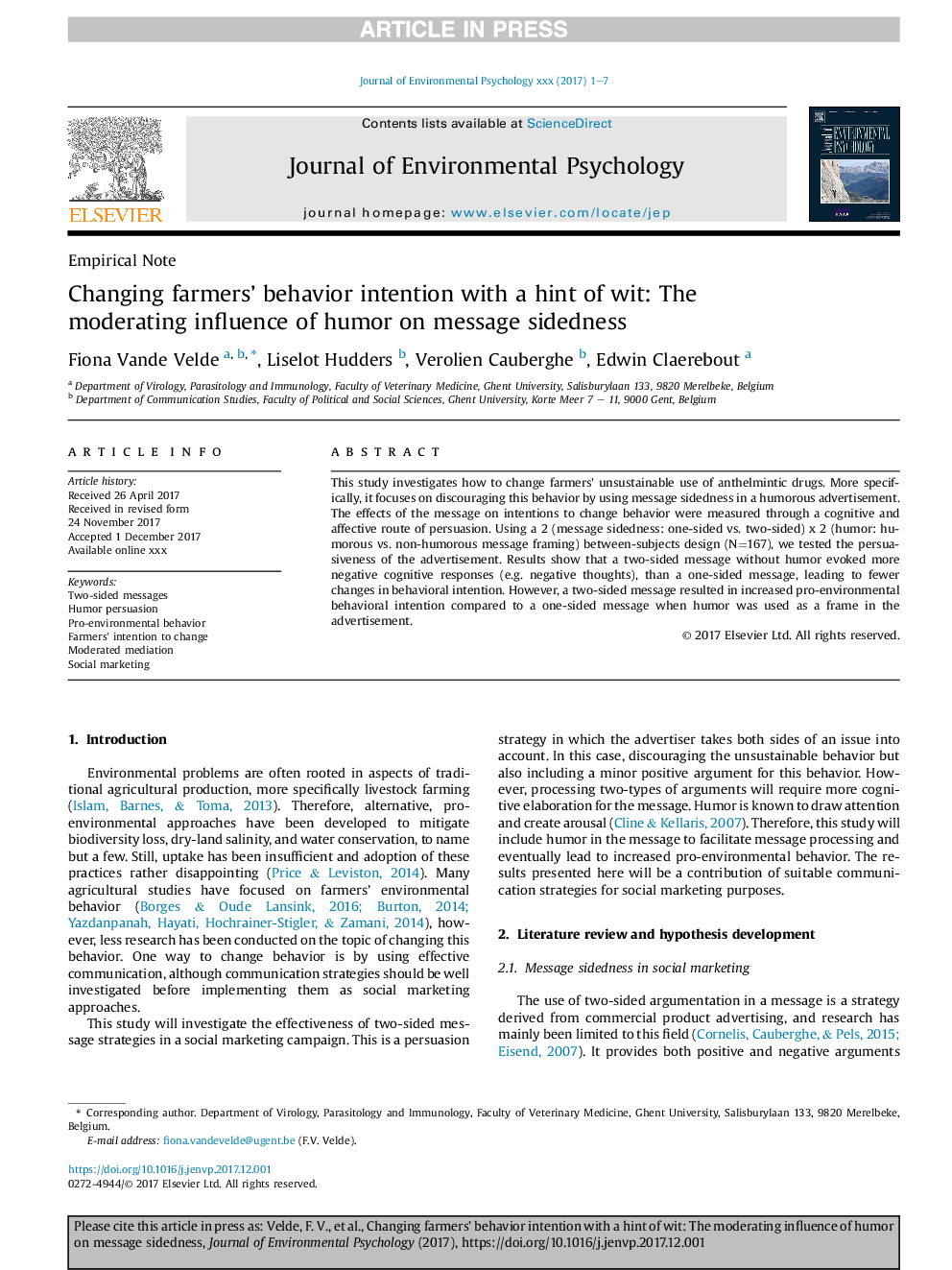| Article ID | Journal | Published Year | Pages | File Type |
|---|---|---|---|---|
| 7245242 | Journal of Environmental Psychology | 2018 | 7 Pages |
Abstract
This study investigates how to change farmers' unsustainable use of anthelmintic drugs. More specifically, it focuses on discouraging this behavior by using message sidedness in a humorous advertisement. The effects of the message on intentions to change behavior were measured through a cognitive and affective route of persuasion. Using a 2 (message sidedness: one-sided vs. two-sided) x 2 (humor: humorous vs. non-humorous message framing) between-subjects design (N=167), we tested the persuasiveness of the advertisement. Results show that a two-sided message without humor evoked more negative cognitive responses (e.g. negative thoughts), than a one-sided message, leading to fewer changes in behavioral intention. However, a two-sided message resulted in increased pro-environmental behavioral intention compared to a one-sided message when humor was used as a frame in the advertisement.
Related Topics
Social Sciences and Humanities
Psychology
Applied Psychology
Authors
Fiona Vande Velde, Liselot Hudders, Verolien Cauberghe, Edwin Claerebout,
